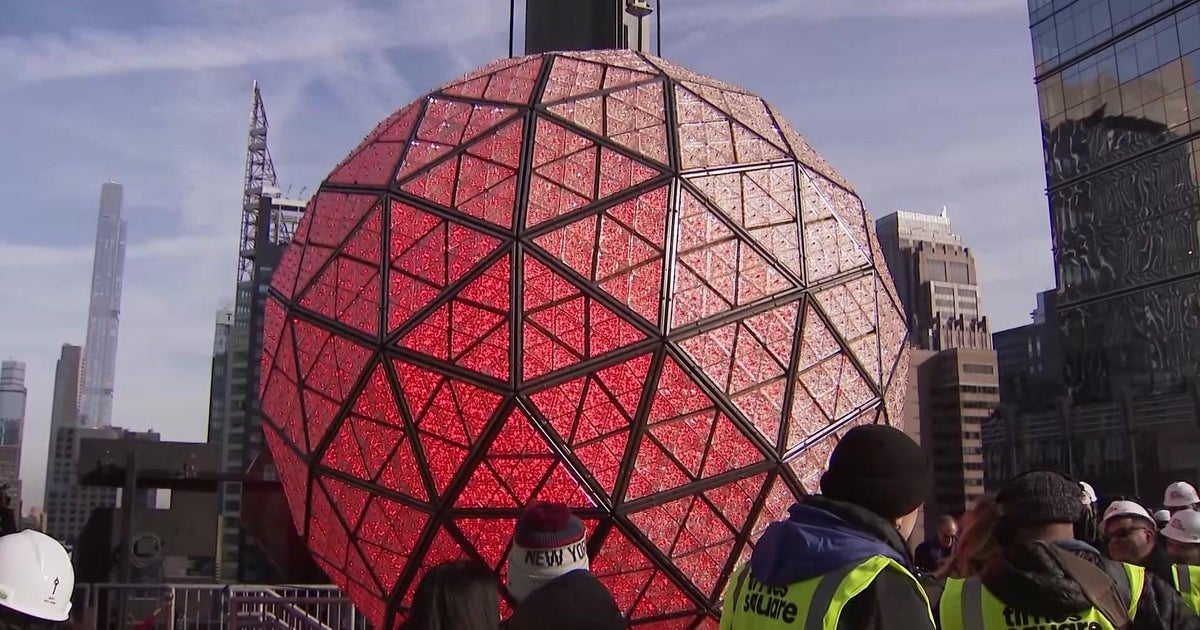Arthur Ashe Stadium To Have Roof By 2017 US Open
NEW YORK (CBSNewYork/AP) — Good news for tennis fans and tennis players alike: U.S. Open rain delays at Arthur Ashe Stadium will be no more by 2017.
The Grand Slam tournament's center court could be covered by a retractable roof as soon as the 2016 tournament, but more likely the following year, U.S. Tennis Association officials said Thursday.
As the men's final was delayed to Monday each of the last five years, they had insisted a roof wasn't yet feasible financially or structurally. A decade after the USTA started studying the issue and three years after architectural firm Rossetti began researching the project, the price tag and the technology are finally workable. The construction will cost about $100 million, down from earlier projections of $200 million.
The U.S. Open becomes the last of the four major tournaments to cover up. The main stadiums at Wimbledon and the Australian Open already have roofs, and the French Open plans one, too.
The Ashe roof is part of a larger, $550 million project to rebuild and expand other courts at the Billie Jean King National Tennis Center. No. 2 stadium Louis Armstrong also will eventually be covered.
The Grandstand, the third-largest court, will move to the opposite corner of the complex, with capacity increased from 6,000 to 8,000 fans. Armstrong, which currently seats 10,000, will be replaced with a larger version that can hold 15,000. The construction will allow for more and improved concessions than the two 50-year-old stadiums currently support.
New tournament and practice courts with additional seating also will be built so more fans can see the players in action; they could be complete as soon as next year's Open. As of now, only a few dozen spectators can squeeze in a view of the practice courts through a fence.
Walkways will be widened and esplanades created in an attempt to reduce the bottlenecks that frequently pile up between the main entrance and Ashe. The tennis center's capacity for each day session will increase from 40,000 to 50,000 people.
The new Grandstand is scheduled to open by the 2016 Open and Armstrong by '18. Fans will see some of the work in process; temporary bleachers likely will be used around the new Armstrong court at the midpoint of the two-year project.
The USTA must still receive final approvals from the city for the plans.
The organization had commissioned three different studies over the years that determined a roof wasn't feasible. The last time the USTA made a request for proposals, in 2009, it did not select Rossetti, the original architect for Ashe.
The firm "took it rather personally," said Danny Zausner, the tennis center's chief operating officer.
"Behind the scenes, they worked on the project for free for a year to try to come up with a concept that no one else thought of," he said.
When Rossetti presented its findings to USTA officials in 2010, they were intrigued. Still, the firm was a long way from solving the riddle of topping Ashe.
As USTA executive director Gordon Smith put it: "It wasn't built for a roof, and the land conditions around it on the site are abysmal."
"We had to find out how to support 5,000 tons of steel on soil that is mush," said Matt Rossetti, the firm's head.
Using lighter materials atop the stadium was considered, but that proved unworkable. The USTA was willing to remove some seats, though not the entire upper bowl.
Technology innovations over the years helped in making what was once impossible possible, Rossetti said — in particular, computer modeling. But about 80 percent of the shift simply came from the painstaking, time-consuming process of delving into different options.
A big breakthrough came just six months ago, when the firm surmised that the roof could be supported by just eight columns. At one point, the prediction was 32 — and there wasn't space for that at the tennis center. It was only two months ago that Rossetti determined the eight columns would actually work.
You May Also Be Interested In These Stories
(TM and © Copyright 2013 CBS Radio Inc. and its relevant subsidiaries. CBS RADIO and EYE Logo TM and Copyright 2013 CBS Broadcasting Inc. Used under license. All Rights Reserved. This material may not be published, broadcast, rewritten, or redistributed. The Associated Press contributed to this report.)



